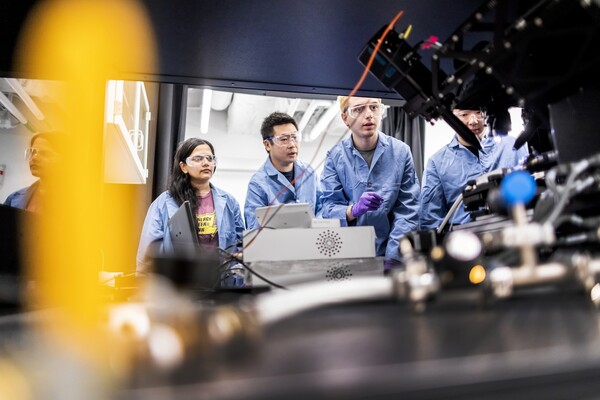
Image: Mininyx Doodle via Getty Images
One morning in 2018, Simon Cantos received a call from his pulmonary team at Penn Medicine because they’d noticed something unusual from the data his home ventilation machine had sent into the office overnight. With a little troubleshooting, it turned out Cantos had just gotten a new mask for the machine, and he’d slept on it in a way that broke the seal enough to let out too much oxygen—luckily, an easy fix. For patients with neuromuscular disorders like Cantos, who has muscular dystrophy, this is just one slice of the multidisciplinary care they get through Penn’s Jay and Randy Fishman Program for Home Assisted Ventilation, and a snapshot of the encouraging leaps in treatment patients have seen within their lifetimes.
“The evolution of care for muscular dystrophy patients has been astounding and something that has advanced significantly over the last 15 years,” says Cantos. “When I was younger, there was very little to no information for my specific type of muscular dystrophy. I was originally diagnosed with congenital muscular dystrophy, which, at the time, was a vague term that was given to those who exhibited symptoms of muscular dystrophy from birth. There was little to no information or any concrete action plans for care when I was diagnosed.”
John Hansen-Flaschen is a pulmonary physician and director of the Jay and Randy Fishman Program for Home Assisted Ventilation, which began treating patients with conditions like amyotrophic lateral sclerosis (ALS), cerebral palsy, chronic obstructive pulmonary disease (COPD), severe scoliosis, and more in 2017.
“Not long ago, many people with severe nerve, muscle, spine, or lung disease died when their breathing muscles could no longer keep up with the need to breathe. Many children born with a congenital nerve or muscle disease such as muscular dystrophy, spinal muscular atrophy, or severe cerebral palsy died of respiratory failure before adulthood,” Hansen-Flaschen says. “For patients battling these diseases, weak breathing muscles also lead to difficulty swallowing, coughing, and clearing mucous. Lung infections and pneumonia were common complications, leading to long hospitalizations and premature death.”
This has changed with recent dramatic advances in home respiratory support where machines have been adapted to be used at home, allowing patients to live safely and thrive in their home setting. When needed, patients wear a face mask attached to a home ventilator the size of a shoe box to assist their breathing while they sleep at night and sometimes also during the day. The machine assists each breath to allow the respiratory muscles to rest. The treatment team sets up home ventilators with a telemetry device that allows them to measure and monitor ventilator usage and function continuously through the internet. Potential issues are discovered and solved before they cause problems, as was the case with Cantos.
This story is by Sophie Kluthe. Read more at Penn Medicine News.

Image: Mininyx Doodle via Getty Images

The sun shades on the Vagelos Institute for Energy Science and Technology.
nocred

Image: Pencho Chukov via Getty Images

nocred